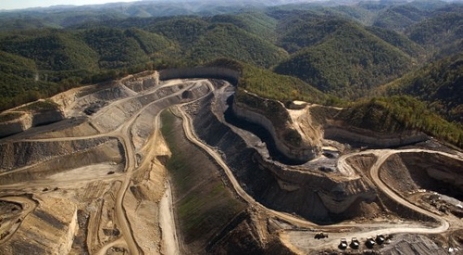Earlier this morning, I wrote a piece for April Fool’s Day, Obama Ends 150-Year War of Strip-Mining in 24 States: Mountaintop Removal Loses Its Groove.
Well, turns out the second part wasn’t an April Fool’s joke after all. EPA administrator Lisa Jackson invoked the rule of science and law today — and for the first time raised the concern of the health care crisis in the coalfields from mountaintop removal.
The EPA administrator announced a major decision today to clamp down on Clean Water Act violations from mountaintop removal mining — yes, the EPA administrator actually used the words “mountaintop removal” and not “mountaintop mining” in the press conference today — and effectively bring an end to the process of valley fills (and the dumping of toxic coal mining waste into the valleys and waterways).
Citing new EPA studies that conclusively demonstrate that “burial of headwater streams by valley fills causes permanent loss of ecosystems,” the EPA issued new conductivity levels “to protect 95 percent of aquatic life and fresh water streams in central Appalachia.”
In responding to this benchmark set on measuring conductivity levels from mining discharges to streams and waterways, Jackson declared in the question and answers with journalists: “No or very few valley fills that are going to be able to meet standards like this.”
In the words of 95-year-old Ken Hechler, the former West Virginia congressman who introduced the first bill in Congress to stop mountaintop removal and strip-mining in 1971, “This is a great victory for the Clean Water Act and justice.”
In 1971, Hechler testified in a House committee: “Representing the largest coal-producing state in the nation, I can testify that strip-mining has ripped the guts out of our mountains, polluted our streams with acid and silt, uprooted trees and forests, devastated the land, seriously destroyed wildlife habitat, left miles of ugly highwalls, ruined the water supply in many areas, and left a trail of utter despair for many honest and hard-working people.”
Forty years later, with over 500 mountains and 1.2 million acres of hardwood forests decimated and blown to bits, with more than 2,000 miles of streams and waterways jammed with toxic coal waste, and untold thousands of American forcefully removed from their historic communities, the nightmare of mountaintop removal appears to be coming to the end of a long and tortuous road of regulations.
Lorelei Scarbro, a Coal River Mountain Watch community organizer and resident in West Virginia, declared: “We are so thankful that the EPA is basing their decision on science, environmental justice, and the health and welfare of coalfield residents. This is a biggy. This is the beginning of the end for valley fills and mountaintop removal. We are not leaving our mountains.”
The beginning of the end of mountaintop removal. Let’s hope.
Meanwhile, Appalachian Voices legislative aide JW Randolph adds: “It is in that vein that we expect Congress to follow the Obama administration’s lead by passing legislation that will permanently protect our homes and communities from mining waste. The Clean Water Protection Act (H.R. 1310) currently has 167 bipartisan cosponsors in the House of Representatives, and the Appalachia Restoration act (S. 696) has 10 bipartisan cosponsors in the Senate. Change in Appalachia is now inevitable, and the time for Congress to pass this legislation is now!”
And while the 150-year strip-mining war continues in 20 other states, this is a beautiful and historic moment to celebrate on behalf of human rights and environmental justice in the Appalachian coalfields.



